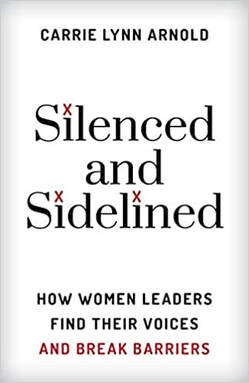|
Do you ever feel wordless? I had a client recently say she felt like she had a conversation bubble floating over her head like a word cloud. She could not string the elements together to form a complete sentence. Labels, names, adverbs, adjectives, nouns, verbs – all dangling in space waiting for some resemblance of order, narrative or expression. It’s a head-scratcher to have so many thousands of choices available in the spoken language and not be able to find a few to summarize your thoughts, feelings or reactions. It can be an odd sensation. The current headlines alone can certainly cause a lot of wordlessness:
Before we all resort to cussing it out, I have a suggestion. We may need to express that we feel speechless. From a physical perspective, we are never truly without words. Unless there is a physical condition – the vocal cords still work. We can speak, but the emotion can be too strong, leaving us unable to find the right declaration to fit the context. These moments of vulnerability invite your leadership. Have you ever been in a meeting and said, “I am without words, and I think we need to all sit in silence for a bit and reflect?”
When was the last time you refrained from problem admiration to admit you did not know how to get past the present obstacle because your emotion was clogging your thinking? Do you permit yourself to slow the constant chatter of achieveachieveachieveachieve hurryhurryhurry talktalktalktalk complaincomplaincomplain directdirectdirectdirect or answeransweransweranswer? Leadership is most often expressed in words, but it can also be felt in silence. There is a time for language and a time to be quiet – good leaders maximize both opportunities and do not let the weird wordless feeling go unexplored. When those moments hit - Let them be. Choose silence and see what emerges. There is an invitation in the space that language cannot fill – we do not always realize we need it, but once there, the body will take some big deep breaths. Where are you wordless and how do you want to manage that? Photos by Tim Mossholder on Unsplash The first answer may not be the real answer. Leaders in the workforce wrestle with provocative questions like:
Nothing is more uncomfortable than an outfit that digs into the gut, pinches the toes, or swallows you whole. Based on Northouse’s last count, there are 63 different theories of leadership. There are dozens of competencies, skills, and behaviors attached to those theories that range from ‘action oriented’ to ‘written communication.’ I liken it to a large walk-in closet stuffed with clothes. When leaders emulate what others define as effective, they may be trying on too many things with few the right fit. We only feel like ourselves when we wear things that hang on our frame in flattering ways. To find the right fit, we can try on a bunch of different outfits, or we can simplify by taking down our personal measurements and then styling our frames based on actual data. When it comes to leadership, don’t just describe your style, vision, and strengths using generic labels and lists of competencies. It is no longer appropriate to say you are a good listener or a good public speaker. Listening and talking are no longer refined enough labels. It is like telling a stylist you like to wear shirts and pants. Some things are naturally assumed. It is also not okay to describe your style, vision or strengths using language you think others want to hear. If you say you are a strategic thinker but then spend all your time as a leader managing and measuring the work, you may have borrowed a strength that is truly not your own, while underplaying something else that is significant. I am noticing many leaders fail to know the essence of their leadership. They do not have the descriptors or expressions to articulate how they lead and what it looks like when they are at their best. They want to be effective but it is not a ‘want’ that has led them to take action regarding self-knowledge. Knowing yourself is the beginning of all wisdom - Aristotle There are dozens of leadership assessments, style personalities, leader profiles, values exercises, and various indexes out on the market. Each can give you deeper insight into self. Almost every one of my readers has taken a least one if not many of these instruments. What have you done with those results? Dust them off and find patterns and phrases that help you get clarity on your style, vision, and strengths. Your coach is a good place to go for support with this work?
How well do you know your leadership? What language do you use when describing it to others? Northouse, P. G. (2013). Leadership theory and practice (6th ed.): Sage Publications. |
Carrie Arnold, PhD, MCC, BCCIn no particular order: Author | Dog mom | Speaker | Reader | Mom to human offspring | Wife | Lover of Learning | Leadership coach & consultant, The Willow Group | Faculty for Evidence-Based Coaching at Fielding Graduate University
�
Categories
All
|
The Willow GroupCarrie Arnold, PhD, MCC
|
Silenced and Sidelined: How Women Leaders Find Their Voices and Break Barriers
|
|
© 2020 The Willow Group, LLC







